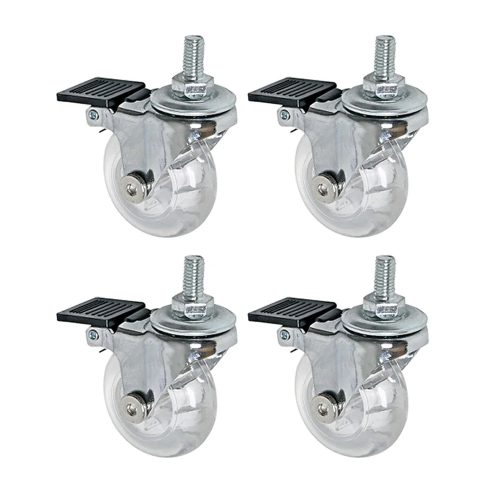The world of industrial mobility is continually evolving, and heavy-duty casters play a pivotal role in enhancing the efficiency and safety of material handling operations. In this article, we’ll explore the latest innovations and advancements in heavy-duty casters that are shaping the future of industrial mobility.
1. Ergonomic Design
One of the recent innovations in heavy-duty casters is a greater focus on ergonomic design. These casters are designed to reduce the physical strain on operators, making it easier to move heavy loads with less effort. Ergonomically designed casters often feature improved handle designs and reduced rolling resistance.
2. Precision Bearings
Advancements in bearing technology have resulted in heavy-duty casters equipped with precision bearings. These bearings reduce friction and allow for smoother movement, even under heavy loads. This innovation not only improves mobility but also extends the lifespan of the casters.
3. Noise Reduction
Noise pollution in industrial settings is a significant concern. To address this, manufacturers have developed heavy-duty casters with noise-reduction features. Quieter casters benefit both employees’ well-being and the overall workplace environment, especially in settings where equipment is frequently moved.
4. Improved Load Capacities
In response to the growing demands of industrial applications, heavy-duty caster manufacturers have increased load capacities. New materials and engineering techniques have enabled casters to support even heavier loads while maintaining durability and maneuverability.
5. Customization Options
Industrial mobility solutions are not one-size-fits-all, and innovation in caster customization has allowed for tailored solutions. Companies can now order heavy-duty casters designed to meet the specific requirements of their applications. Customization options include caster size, material, load capacity, and even branding.
6. Enhanced Safety Features
Safety is a paramount concern in industrial environments. Manufacturers are introducing heavy-duty casters with enhanced safety features, such as integrated locking systems and fail-safe mechanisms. These features help prevent accidents and protect both personnel and equipment.
7. IoT Integration
The Internet of Things (IoT) is making its way into industrial mobility solutions. IoT-enabled heavy-duty casters can be tracked and monitored in real time. This data can be used for predictive maintenance, improving operational efficiency, and ensuring caster safety.
8. Environmentally Friendly Materials
Sustainability is a growing concern in the industrial sector. Some manufacturers are now producing heavy-duty casters using environmentally friendly materials. This not only reduces the environmental impact but also aligns with corporate sustainability goals.
9. Anti-Corrosion Coatings
In corrosive environments, the durability of heavy-duty casters can be compromised. To combat this, manufacturers are developing casters with anti-corrosion coatings. These coatings protect the casters from rust and deterioration, increasing their longevity.
10. Smart Caster Systems
Smart caster systems combine the latest technology with heavy-duty casters. These systems incorporate sensors, real-time data analysis, and automated controls to optimize material handling processes. They can adapt to changing conditions and improve overall operational efficiency.
In conclusion, innovations in heavy-duty casters are driving positive changes in the industrial mobility landscape. From ergonomic designs to IoT integration and sustainability efforts, these advancements are shaping a safer, more efficient, and environmentally conscious future for material handling operations. Keep an eye on these innovations as they continue to transform the world of industrial mobility solutions.


